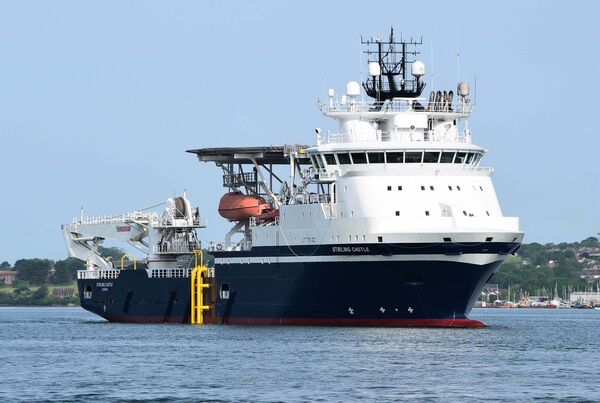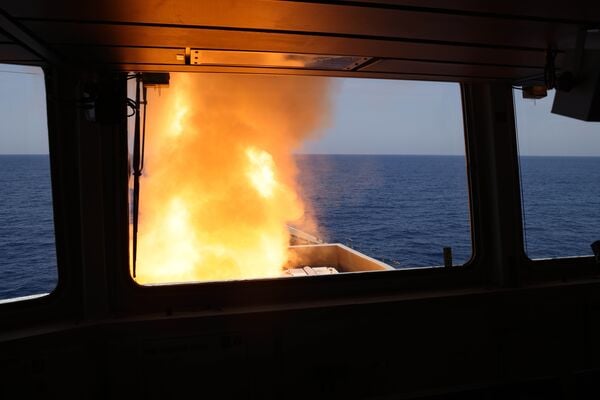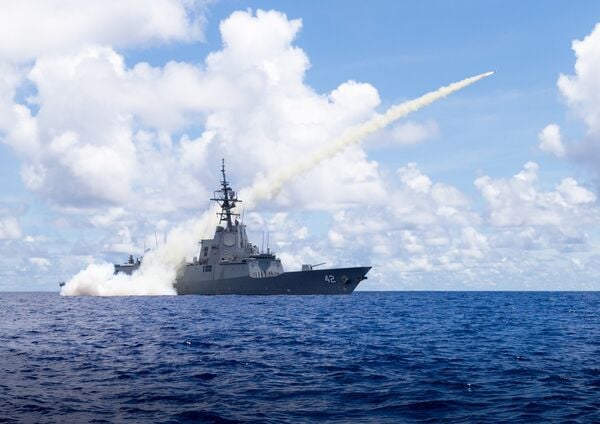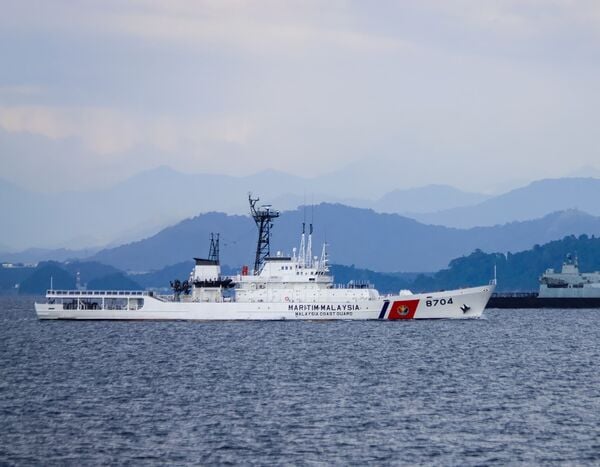- About
- Intara
- Capabilities
- Advisory
- Resources
- News
- Store
New Royal Navy minehunting mother ship starts sea trials
26 May 2023
by Kate Tringham


Stirling Castle has started sea trials with the RFA after completing its conversion into a mother ship for offboard autonomous mine countermeasure payloads. (RFA Nostalgia)
The UK Royal Navy's (RN's) new minehunting mother ship started sea trials with Royal Fleet Auxiliary (RFA) personnel after completing its military conversion from an oil rig offshore support vessel (OSV).
Stirling Castle (ex-MV Island Crown ) was purchased second-hand from Island Offshore Management for GBP40 million (USD49.3 million) to serve as a host platform for offboard autonomous mine countermeasure payloads.
The ship arrived at His Majesty's Naval Base (HMNB), Devonport, from Norway in late January to undergo its conversion. Modification work has been relatively minimal aside from the installation of specific military equipment for its new role.
The trials and RFA crew training period are expected to continue for the next couple of months, with a view to achieving initial operating capability in July–August 2023. The initial emphasis of trials will be on learning how best to run and maintain the 6,000 tonne vessel, test safety systems, and effectively write the instruction/operators' manual, Captain Ali Clack, the ship's commanding officer said.
HMS Diamond shoots down Houthi missile in Red Sea
26 April 2024
by Kate Tringham


HMS Diamond shoots down a missile fired by Iranian-backed Houthis from Yemen over the Gulf of Aden using its Sea Viper missile system – the first time a Royal Navy warship has intercepted a missile in combat since 1991. (Royal Navy/Crown Copyright)
The UK Royal Navy's (RN's) Daring (Type 45)-class destroyer HMS Diamond (D 34) has successfully engaged an anti-ship ballistic missile (ASBM) launched by Yemen-based Ansar Allah (commonly known as Houthi) rebels targeting a merchant ship in the Gulf of Aden, the service confirmed on 25 April.
During the incident, which took place around 1151 h local time (Sanaa time) on 24 April, Diamond used its Sea Viper anti-air guided weapon system to shoot down the missile, the navy said. According to a US Central Command (CENTCOM) statement issued on 25 April, the missile was likely targeting the US-flagged, owned, and operated merchant vessel MV Yorktown, which has 18 US and four Greek crew members onboard.
No injuries or damage was sustained by the ship or its crew, CENTCOM said.
Diamond
Special Report: Australia to accentuate maritime capabilities amid China's coercion
25 April 2024
by Ridzwan Rahmat


A Royal Australian Navy Hobart-class guided-missile destroyer fires a Harpoon surface-to-surface missile during Exercise ‘Pacific Vanguard' 2022. The class will be equipped with the Naval Strike Missile in the future. (Commonwealth of Australia)
The Australian government has released two more policy documents that outline its defence development intentions over the next few years. The two documents – National Defence Strategy (NDS) 2024 and Integrated Investment Program (IIP) 2024 – were unveiled by Australia's Minister of Defence Richard Marles on 17 April.
The new policies follow Australia's Defence Strategic Review (DSR) – issued in April 2023 – and its evaluation of surface combatant capabilities, which was released earlier in 2024.
As outlined in the IIP 2024, the Australian government is projected to spend AUD765 billion (USD496 billion) in the decade between 2024 and 2034 on defence programmes. This amount includes an additional AUD56 billion above the previous trajectory that was forecast for this period.
Vietnam issues diplomatic note to Malaysia after South China Sea collision
25 April 2024
by Ridzwan Rahmat


A file image of KM Arau , which collided into a Vietnamese fishing vessel on 22 April. (MMEA)
Hanoi has issued a diplomatic note to Putrajaya after a Malaysia Maritime Enforcement Agency (MMEA) vessel collided into a Vietnamese fishing boat in disputed waters of the South China Sea, multiple sources close to the matter confirmed to Janes .
Vessels involved in the collision are the MMEA's sole Arau (Nojima)-class offshore patrol vessel (OPV) KM Arau and an unnamed fishing boat with pennant number 90729.
The collision took place on 22 April at about 15 n miles southeast of Investigator Shoal, which lies within the Spratly Islands cluster. The feature is occupied by Malaysia, but also claimed by China, Vietnam, and Taiwan as part of their respective maritime territories.
As a result of the collision, 22 fishermen from 90729 fell overboard and a search-and-rescue operation (SAR) was established by both the Vietnamese and Malaysian authorities.
The UK Royal Navy's (RN's) new minehunting mother ship started sea trials with Royal Fleet Auxiliary...
Latest Podcasts
Iran Israel analysis
In this podcast Janes analysts discuss the Iranian attacks on Israel on the 14 April. They highlight the military systems used by Iran and the performance and impact of these on Israel. They also discuss the implications of this attack goi...
Listen nowJanes Case Studies
Using Janes Intara to build a common intelligence picture: Russian build up on the Ukrainian border
View Case StudyNews Categories
 Sea Details
Sea Details